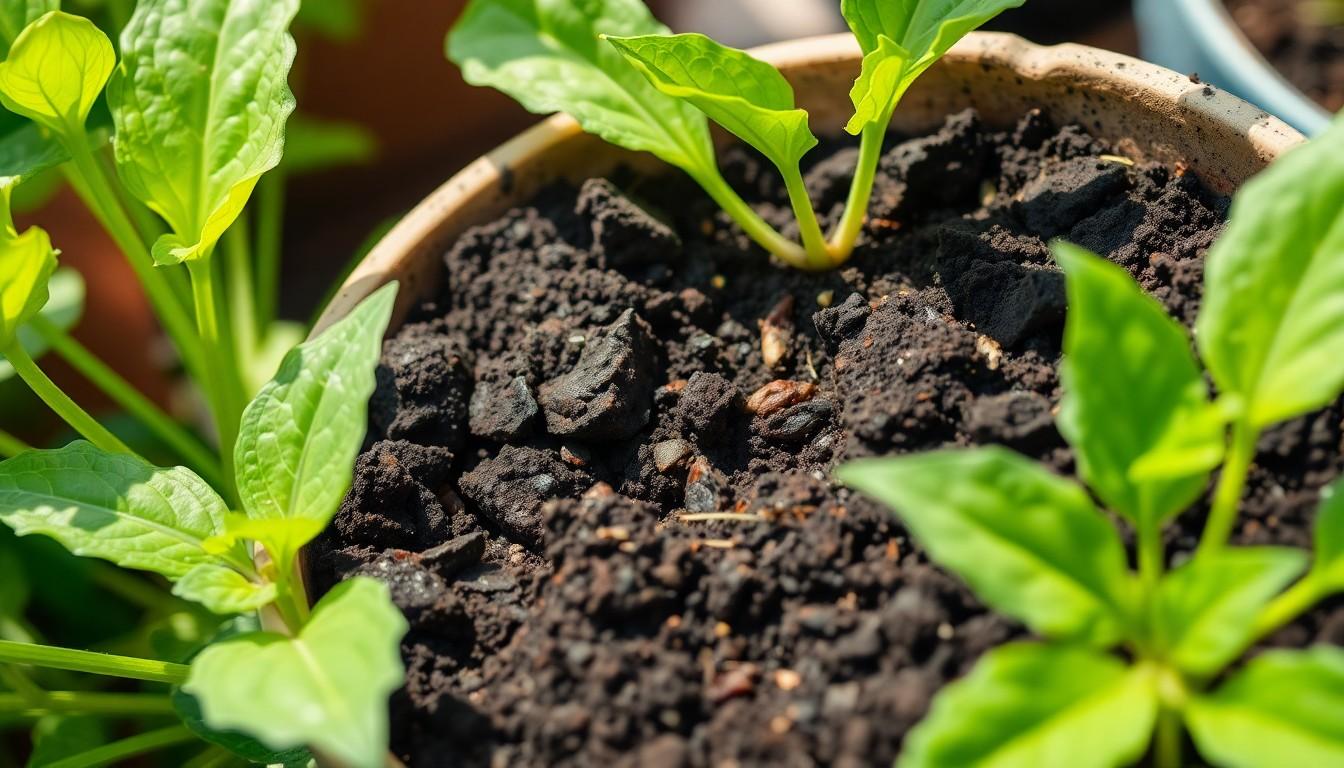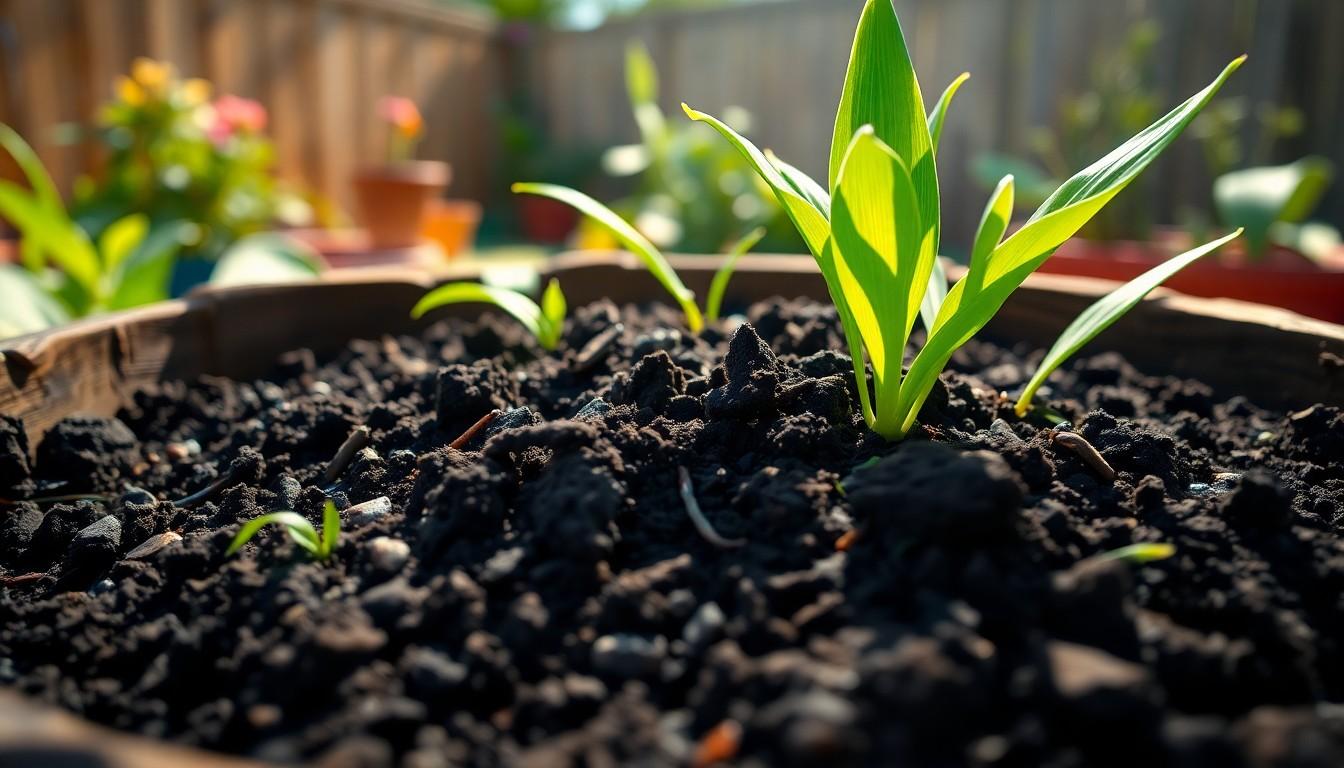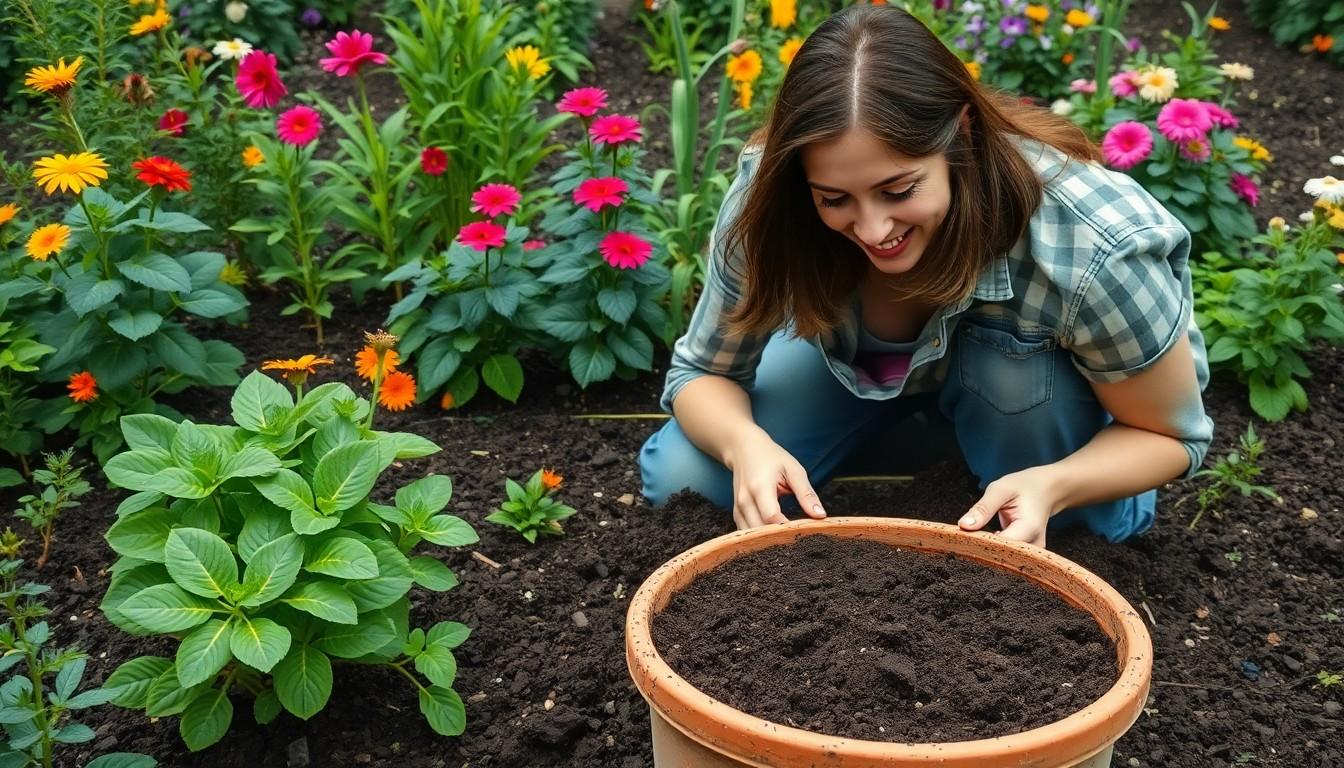When it comes to potting plants, the age-old question arises: can you use garden soil in pots? Picture this: you’ve got a thriving garden with rich, earthy soil just begging to be put to good use. But before you start shoveling it into your pots like it’s a free buffet, let’s dig a little deeper.
Understanding Garden Soil
Garden soil consists of the top layer of earth, rich in organic matter and nutrients. This soil supports various plant species, promoting healthy root growth and improving overall plant health.
What Is Garden Soil?
Garden soil includes a mixture of sand, silt, clay, and decomposed organic matter. This combination creates an environment conducive to plant life, providing essential nutrients and support. Microorganisms such as bacteria and fungi thrive in garden soil, aiding in nutrient availability. Different regions yield varied soil compositions, influencing the type of flora that flourishes. Knowing the specific characteristics of garden soil helps determine its suitability for potted plants.
Benefits of Using Garden Soil
Using garden soil can enhance nutrient diversity in potted plants. Its organic matter promotes moisture retention, reducing the frequency of watering. The presence of beneficial microorganisms supports a healthy root system. Additionally, garden soil often proves cost-effective compared to commercial potting mixes. Various plants may thrive due to the natural nutrients found in garden soil, leading to vibrant and lush growth. Integrating garden soil into potting strategies can facilitate robust plant development.
The Pros of Using Garden Soil in Pots

Using garden soil in pots offers several advantages, particularly for those looking to enhance their planting experience.
Nutrient-Rich Composition
Garden soil contains a diverse array of nutrients essential for plant health. Microorganisms thrive in this environment, aiding in the conversion and availability of nutrients. Essential elements such as nitrogen, phosphorus, and potassium support vigorous growth. Organic matter also enhances soil structure, allowing roots to access nutrients more effectively. In many cases, using garden soil can lead to more vibrant and resilient plants compared to standard potting mixes. The interaction between various soil components fosters a thriving ecosystem, benefiting the plants housed within pots.
Cost-Effectiveness
Using garden soil proves to be a cost-effective choice for gardeners seeking to save on supplies. Purchasing commercial potting mixes can quickly add up, making garden soil an appealing alternative. Sourcing soil from one’s own garden eliminates the need for expensive store-bought options. For those with an established garden, reusing soil reduces waste and maximizes resources. Ultimately, opting for garden soil promotes sustainable gardening practices while keeping expenses in check.
The Cons of Using Garden Soil in Pots
Using garden soil in pots presents drawbacks worth considering. These issues may affect plant health and growth.
Potential Pests and Diseases
Garden soil can harbor pests and diseases. Insects like aphids and termites often thrive in garden environments. Soil-borne diseases such as root rot and fungal infections might transfer to potted plants. Disease spores can remain dormant in soil, ready to infect vulnerable plants. Contaminated soil negates the sanitary conditions required for healthy potted growth. Regular monitoring is crucial to prevent infestations or health issues.
Compaction Issues
Compaction presents another challenge for garden soil used in pots. Heavy particles can limit airflow, restricting oxygen availability to plant roots. Roots require space to expand and absorb nutrients effectively; compacted soil can hinder this process. Drainage becomes problematic, increasing the risk of waterlogging and root rot. Additionally, maintaining the right moisture levels proves difficult in compacted soil. Regular aeration is necessary to mitigate these issues and ensure robust plant development.
Alternatives to Garden Soil for Containers
Using the right growing medium for containers is crucial for plant health. Numerous alternatives exist that offer specific benefits.
Potting Soil
Potting soil provides a well-balanced mix of ingredients tailored for container gardening. This type of soil combines peat moss, vermiculite, and perlite, creating a lightweight medium with excellent drainage. Oxygen availability is enhanced, which facilitates healthy root growth. Potting soil typically contains fewer pathogens compared to garden soil, reducing the likelihood of diseases. Moreover, many commercial potting soils are pre-fertilized, ensuring plants receive essential nutrients right from the start. Choosing a quality potting soil can significantly improve container gardening outcomes.
Composts and Blends
Composts and blends serve as environmentally friendly options for container gardens. These materials consist of decomposed organic matter, providing rich nutrients and beneficial microorganisms. Blending compost with potting soil enhances the nutrient profile while improving moisture retention. This mixture promotes healthier root systems and stimulates vibrant growth in plants. Utilizing a combination of compost and specific additives, like coconut coir, can create an optimal environment for diverse plant species. Such blends support sustainable gardening practices while cultivating flourishing plants in containers.
Best Practices for Using Garden Soil in Pots
Using garden soil in pots requires precautions for optimal plant health. Consider testing the soil before use to ensure it meets necessary standards.
Testing and Amending Soil
Check the pH level of garden soil to determine its suitability. A pH range between 6.0 and 7.0 supports most plants. Amending the soil may involve adding lime to increase pH or sulfur to decrease it. Heavy metals and nutrient deficiencies pose risks, so conduct tests for these aspects. Adding organic matter, like compost, enriches nutrient content and improves aeration. Regularly monitor soil structure as plants grow, making amendments when necessary.
Ensuring Proper Drainage
Proper drainage remains crucial for healthy potted plants. Incorporate materials like perlite or coarse sand to enhance soil drainage. This reduces water retention, preventing waterlogged conditions. Large pots often require drainage holes at the bottom to facilitate excess water escape. Dense garden soil can compact over time, limiting airflow to roots. Inspect pots periodically and consider repotting plants if drainage issues arise. Maintaining a well-draining soil mix encourages robust root development and minimizes risks of root rot.

